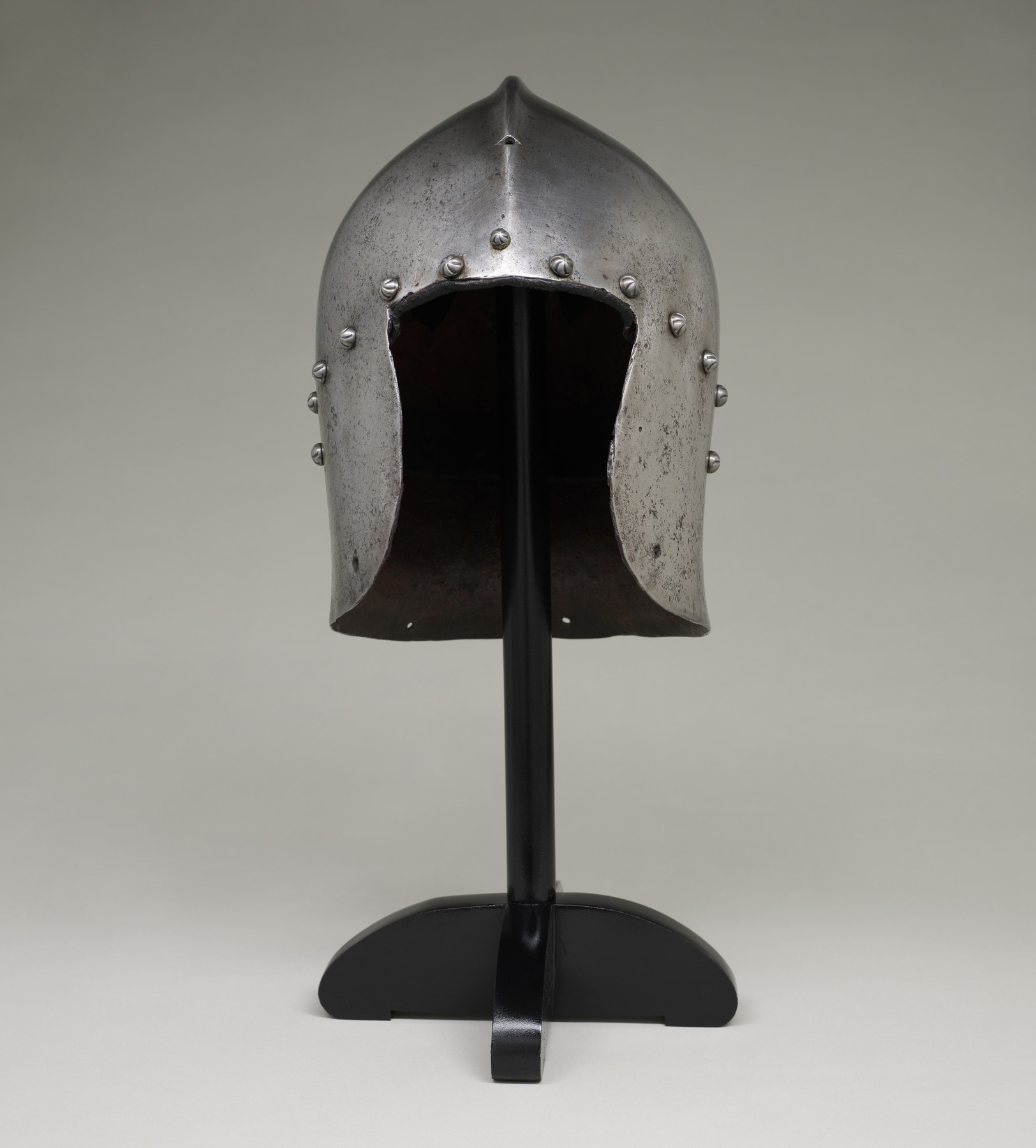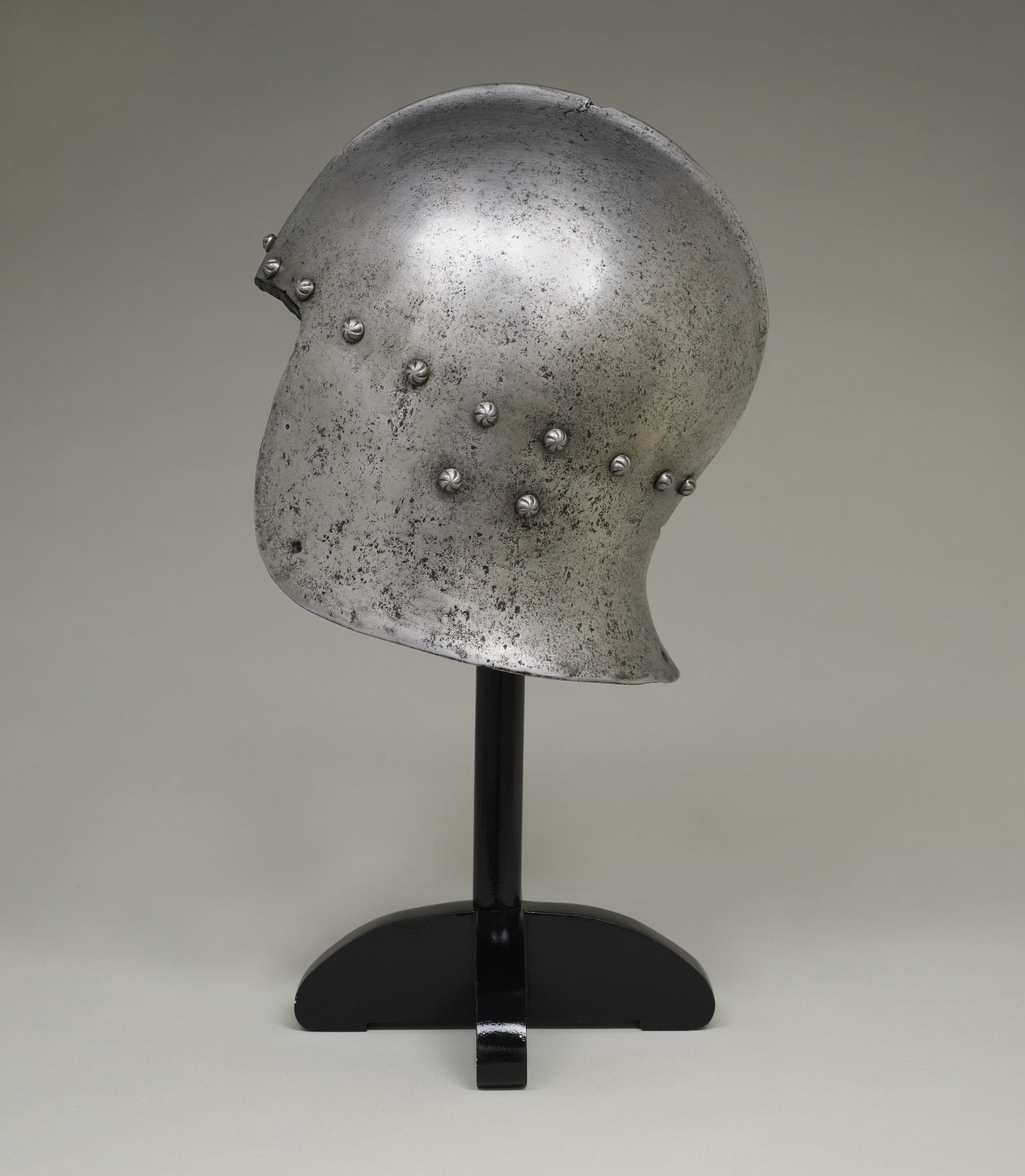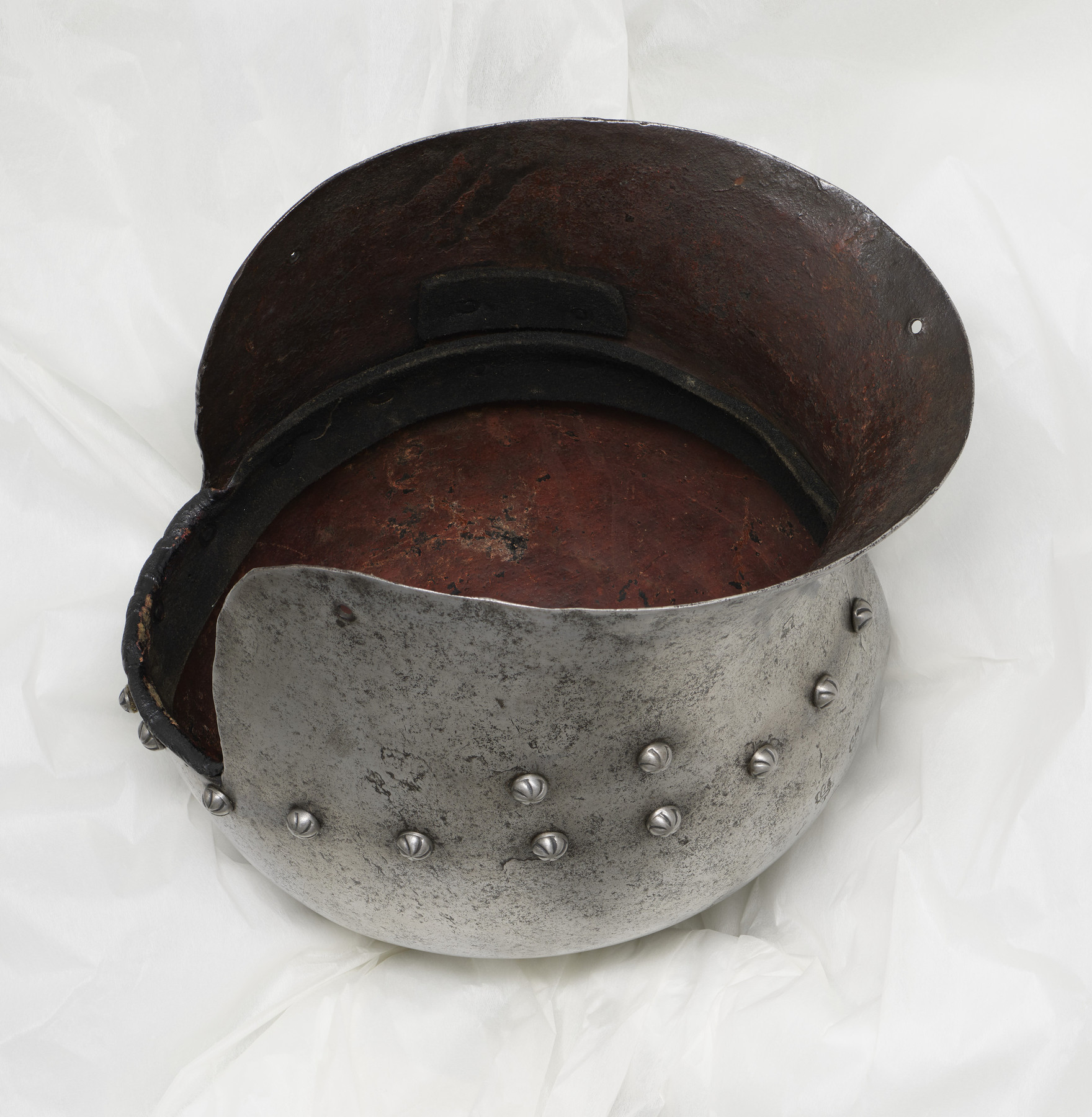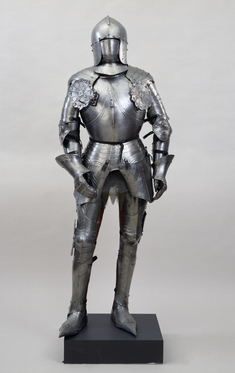Helmet of Suit of Armor
The two main "schools" of armor design in 15th-century Europe were the Italian and the German. While the Germans favored pointed "Gothic" lines and surfaces decorated with channeling, the Italian style was characterized by a smooth finish and rounded surfaces, which gave the armor a sturdy appearance. This armor combines elements of both. The helmet, a type known as a barbute, a type of sallet, is stamped with the mark of armorer Antonio Missaglia of Milan, who was active about 1450. The bevor (chin piece) is also Italian, late 15th-century. The remainder of the armor, with its channeled surfaces is typically German. Suits of armor made up of pieces from different armorers were quite common. Armor was very expensive, and individual pieces damaged on the battlefield might simply be replaced.
Provenance
Provenance (from the French provenir, 'to come from/forth') is the chronology of the ownership, custody, or location of a historical object. Learn more about provenance at the Walters.
Sale, American Art Association, New York, November 19, 1921, no. 316; Henry Walters, Baltimore, 1921 [mode of acquisition unknown]; Walters Art Museum, 1931, by bequest.
Measurements
Overall: 66 9/16 x 26 11/16 x 20 7/8 in. (169 x 67.8 x 53 cm)
Credit Line
Acquired by Henry Walters, 1921
Location in Museum
Accession Number
In libraries, galleries, museums, and archives, an accession number is a unique identifier assigned to each object in the collection.
In libraries, galleries, museums, and archives, an accession number is a unique identifier assigned to each object in the collection.
51.580.1

















